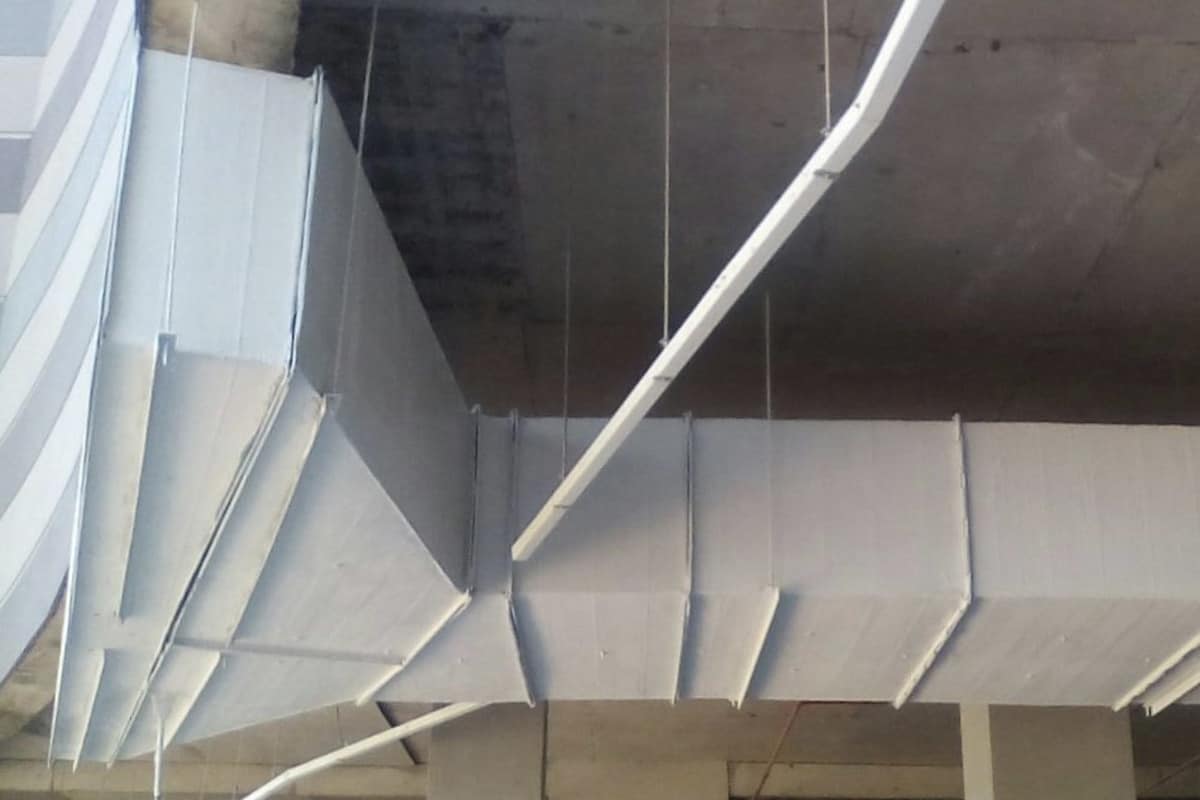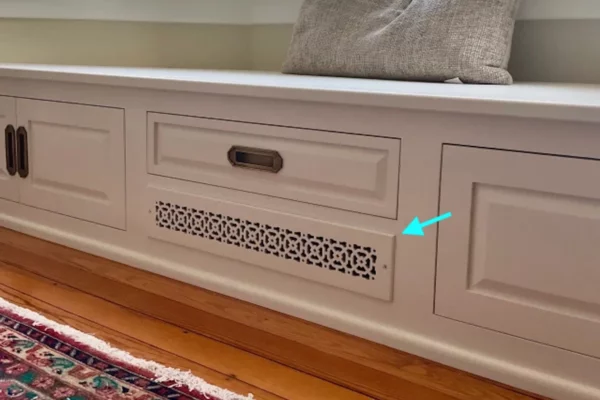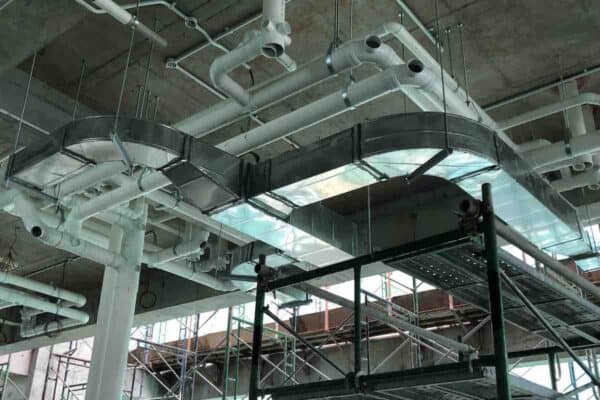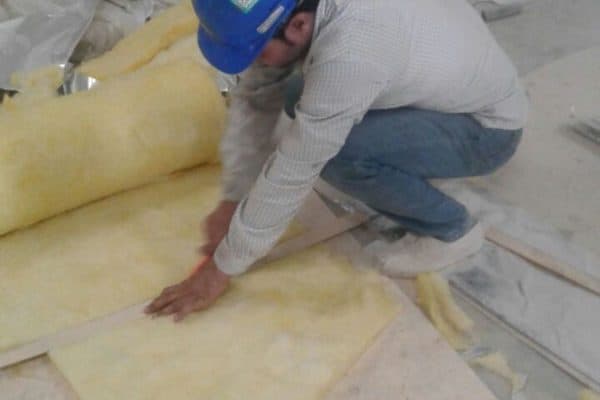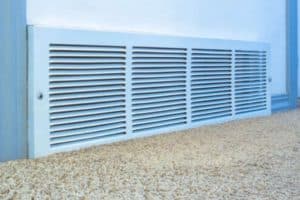6 Types of Ducts in HVAC (Rigid, Kitchen, Fire & Pre-Insulated)
Ducts are one of the major elements in HVAC. They are used to distribute air for various air conditioning systems as well as ventilation systems. There are many types of HVAC ducts. So, what are the common types of ducts in HVAC?
Generally, there are 6 common types of ducts in HVAC as follow:
- Rigid Duct
- Flexible Duct
- Fire-Rated Duct
- Kitchen Exhaust Duct
- PVC Duct
- Pre-Insulated Duct
Most people are familiar with rigid ducts and flexible ducts. However, other types of HVAC ducts listed above are equally important. Let’s look at their appearance and applications as well as some of their unique properties.
1. Rigid Duct
Rigid ducts are also known as sheet metal ducts. As the name suggests, they are made of sheet metals which are usually galvanized steels. Rigid ducts can be made in square, rectangular or round shapes.
Square rigid ducts are more economical to produce than both rectangular and round rigid ducts because the total surface area is lesser and thus, the material used is lesser. However, rectangular rigid ducts with specific sizes can be on-par with square rigid ducts in terms of the cost.
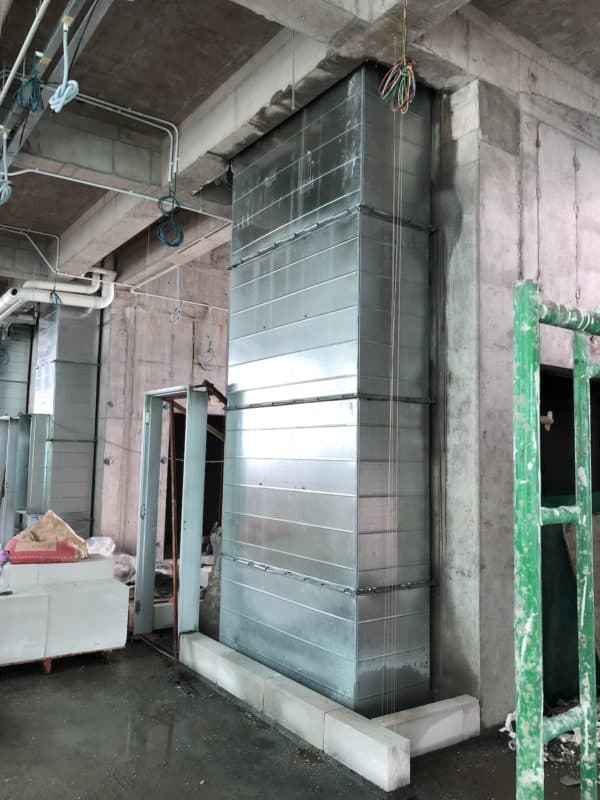
Rigid ducts can be categorized into two types; a) insulated rigid ducts and b) uninsulated rigid ducts. The two most common insulated rigid ducts are supply air ducts and return air ducts used for air conditioning. Meanwhile, the fresh air ducts and exhaust air ducts in toilets and mechanical rooms can be uninsulated rigid ducts.
In HVAC, main ducts and branch ducts are usually rigid ducts. They are more likely in a rectangular shape rather than in a square shape despite the higher cost because of the limited space above the ceiling.
The thickness of HVAC rigid ducts starts from 0.6mm (24 SWG) and 0.8mm (22 SWG) up to 1.0mm (20 SWG) and 1.2mm (18 SWG). The bigger the rigid duct size, the thicker the sheet metal. Rigid ducts are usually constructed in accordance with SMACNA standards.
Rigid ducts have two kinds of jointing methods; either slip & drive joint or TDC joint. As the name suggests, the slip & drive jointing method is sort of like sliding two rigid ducts into one slip & drive joint to connect.
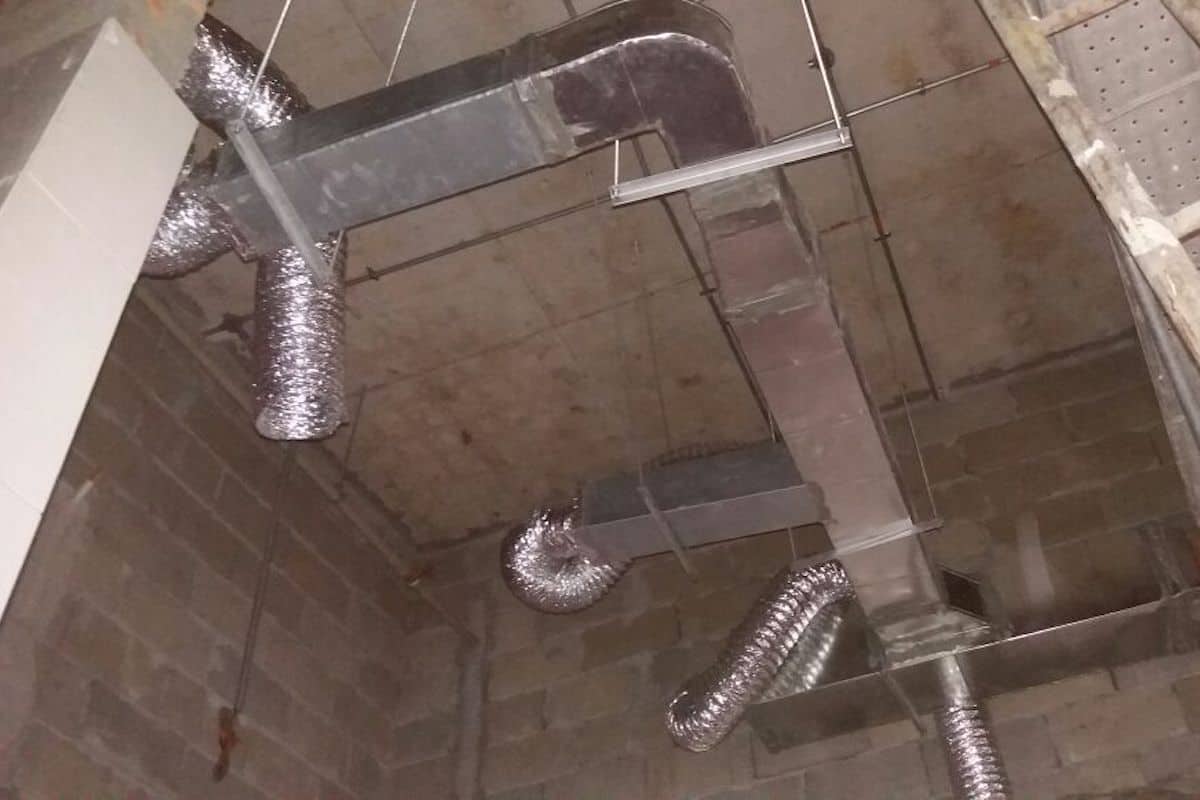
Meanwhile, the TDC jointing method involves the bending of the end of two rigid ducts, then using multiple bolts and nuts as well as several TDC clips to secure.
The slip & drive jointing method is easier and faster than the TDC jointing method. However, it can only be used for smaller duct sizes such as 400mm and 600mm. Larger duct sizes must be joint using the TDC jointing method because it is stronger.
On the other hand, round rigid ducts often don’t have any joint because they are produced as a whole but they are much more expensive than both square rigid ducts and rectangular rigid ducts. Hence, they are less common.
However, round ducts are more preferred when installed below the ceiling especially when the interior aesthetic requirement is high.
Rigid ducts used for air conditioning must be insulated to prevent condensation. Usually, the insulation is either fiberglass insulations or cross-linked polyethylene insulations. If it is the former, the outer appearance will be in silver color. Otherwise, they may look grey in color.
When used for ventilation, rigid ducts should not be confused with fire-rated ducts as they both look very similar. Rigid ducts are not meant to resist fire and they should not be used for the smoke spill and pressurization system.
Nevertheless, some countries consider rigid ducts as fire-rated ducts when the thickness of the rigid ducts is 1.2mm (18 SWG) regardless of the duct size.
2. Flexible Duct
Flexible ducts are very common in HVAC. They are usually used as supply air ducts and return air ducts for air conditioning. Besides, they can be used for ventilation as well.
When used for air conditioning, flexible ducts are insulated with fiberglass insulations. Meanwhile, flexible ducts without insulations are only used for ventilation such as toilet exhaust.
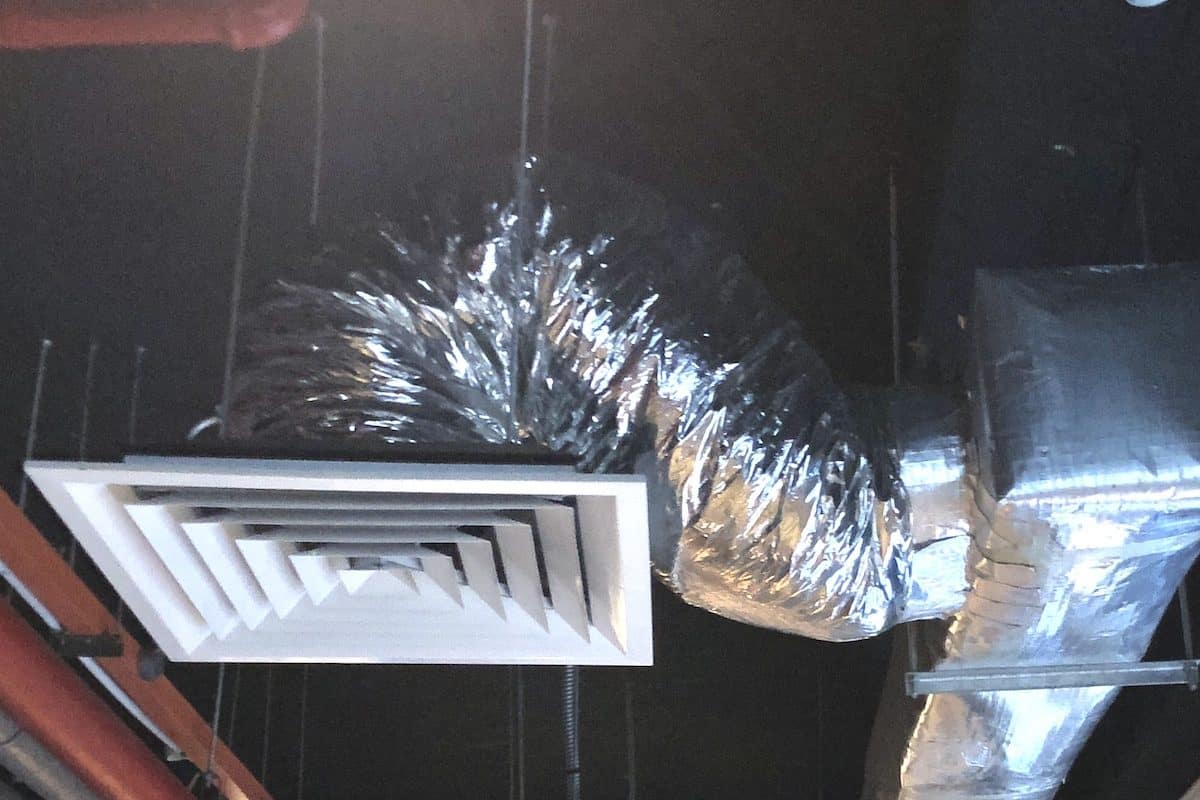
Many houses in the United States and other nearby countries have a centralized air conditioning system. Their supply air ducts are mostly insulated flexible ducts. Some of them use rigid main supply air ducts and connect to the respective supply air diffusers using an insulated flexible duct.
Flexible ducts are always round in shape with common sizes such as 6″, 8″ and 10″. Their outer appearance is silver in color no matter if they are insulated or not because their outer surface is always wrapped with a thin layer of aluminium foil.
Most flexible ducts are connected to rigid ducts. Hence, one flexible duct requires one duct collar and one steel bend to secure. Furthermore, duct glue and a duct sealant are often needed.
Flexible ducts are cheaper and easier to install than rigid ducts. Hence, many people often preferred to use flexible ducts whenever possible. However, the main disadvantage of flexible ducts is high pressure drop and low airflow.
Because flexible ducts are flexible, they are prone to sharp bends. If a flexible duct is bent too much, it can block the airflow entirely. Hence, it is advisable that a flexible duct should not be more than 2.5 meters in length.
Some people are wondering if flexible ducts can be used for return air. Hence, I wrote an article about it and you can check it out here: Can Round Flexible Duct Be Used for HVAC Return Air?
Whenever there is a flexible duct, they are always a plenum box associated with the flexible duct. Conversely, rigid ducts often don’t use a plenum box for air distribution. For more information about the HVAC plenum box, check out my blog post: 4 Types of HVAC Plenums (Basics & Applications).
In the meantime, I would like to inform you that you can learn quicker by getting my HVAC Begin (eBook) if you’re a beginner. But, if you have a year or two of experience, then I would suggest you consider my HVAC Basics (eBook). Nonetheless, I encourage you enroll in my HVAC Beginner Course: 10 Days to Become Competent in HVAC if you want to equipped yourself with a complete set of basic HVAC skills.
HVAC Beginner Course
Learn the most basics and foundational HVAC skills including cooling capacity calculation, equipment selection, duct sizing, pipe sizing, exhaust fan sizing, controls, electrical and more.
3. Fire-Rated Duct
Fire-rated ducts are used for the smoke spill and pressurization system in HVAC. They are designed to withstand fire for at least 2 hours.
In some countries like Malaysia, if rigid ducts are constructed with a thickness of 1.2mm (18 SWG) regardless of the duct size, they are considered fire-rated ducts. Otherwise, a layer of 2-hour fire-rated paint must be applied on the external surface of SMACNA-standard constructed rigid ducts.
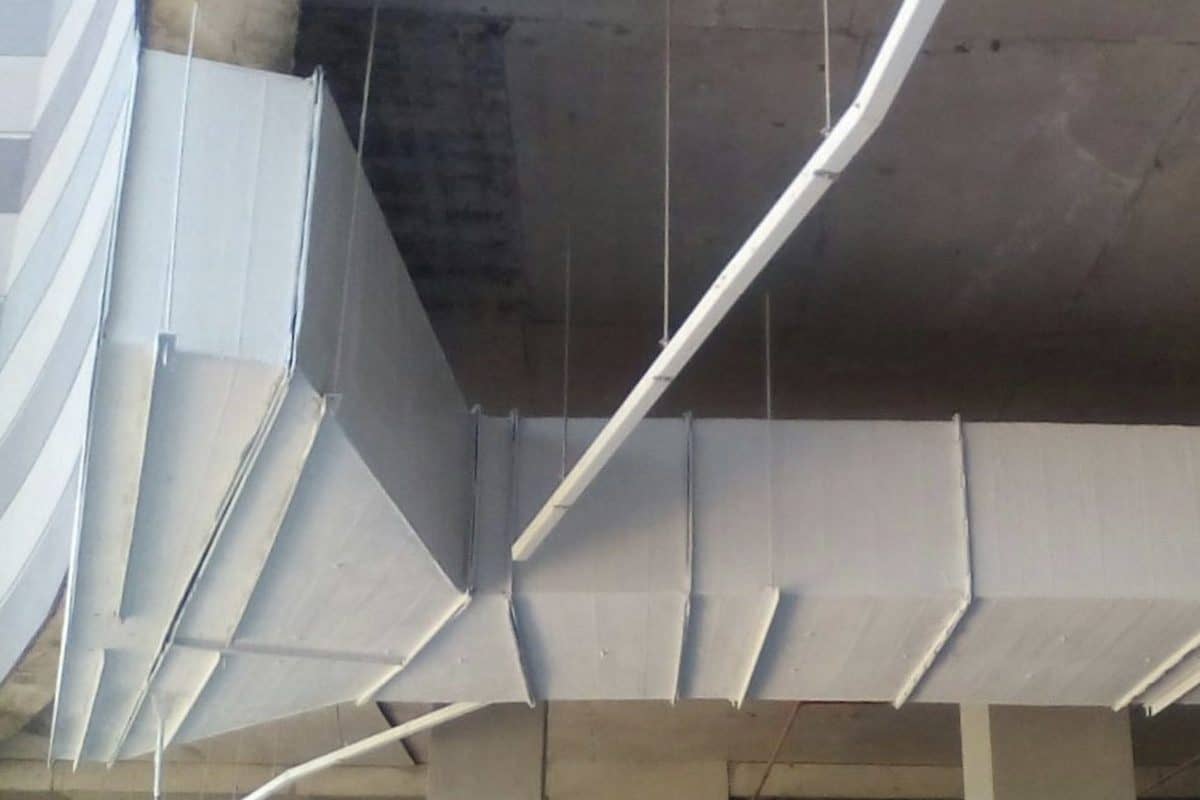
Because most fire-rated ducts are used for ventilation rather than air conditioning, they are mostly not insulated. If they are not painted, they look just like rigid ducts which have a shiny silver surface. If they are treated with 2-hour fire-rated paint, they usually form a rough surface, white in color.
Commonly, fire-rated ducts can be found in high-rise buildings where there is a smoke extraction system for carparks and a pressurization system for the staircase and lift lobby.
The integrity of the ducts used for smoke extraction and pressurization is extremely crucial because if they fail, the smoke extraction and pressurization system will fail as well.
Sometimes, air handling units may share the same ductwork with smoke extraction fans. In this case, the ducts used for air conditioning must also be specified as fire-rated ducts.
4. Kitchen Exhaust Duct
Kitchen exhaust ducts are usually made of black steel (carbon steel) rather than galvanized steel. Many kitchen exhaust ducts have a thickness of 1.6mm (16 SWG).
Light kitchens that don’t emit a lot of greasy exhaust air may use ducts made of galvanized steel or even aluminium. However, commercial kitchens will always use black steel for their exhaust ducts.
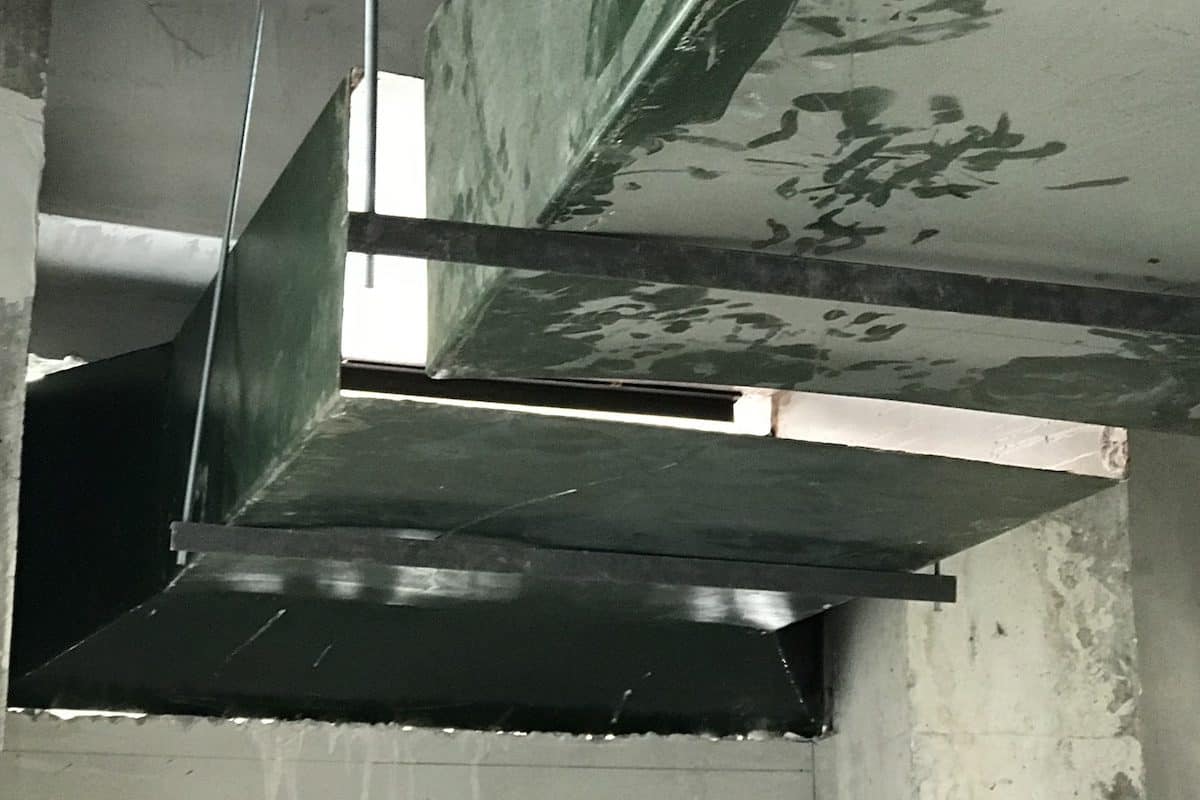
Commercial kitchens need to discharge a huge amount of greasy and smelly kitchen exhaust air. But, they can’t afford to leak any smell to other parts of the commercial building.
Hence, kitchen exhaust duct joints need to be welded rather than using slip & drive joint or TDC joint. Since galvanized steel and aluminium are very difficult to weld, black steel material is chosen for kitchen exhaust ducts.
Light kitchens may not have high airflow and a few leakages is usually fine. Hence, they can use the cheaper aluminium or the easier to install galvanized steel as the material for their exhaust ducts.
Black steel or carbon steel is prone to rust. Hence, kitchen exhaust ducts are always coated with a layer of anti-corrosion paint, usually green in color but depending on the building’s requirement.
Kitchen exhaust ducts are usually not insulated. However, if they are located in places where people may come into contact or pass through air-conditioned rooms, they are most likely to have insulations.
5. PVC Duct
Some buildings use PVC material for their bathroom exhaust ducts. PVC ducts are usually round in shape without insulations. They are more commonly used for basic exhaust applications.
The main advantage of PVC ducts is low cost. Besides, PVC ducts are easier and faster to install than rigid ducts made of galvanized steel. Usually, PVC ducts are installed without bends.
Still, PVC ducts are connected to exhaust fans through uninsulated flexible ducts.
6. Pre-Insulated Duct
Pre-insulated ducts are made of either polyurethane (PU) or polyisocyanurate (PIR) material. They are available on the market for many years. However, their adoption rate is slow.
The main disadvantage of pre-insulated ducts is higher cost. Since most HVAC contractors prioritize cost over efficiency, pre-insulated ducts are not preferred by many installers.
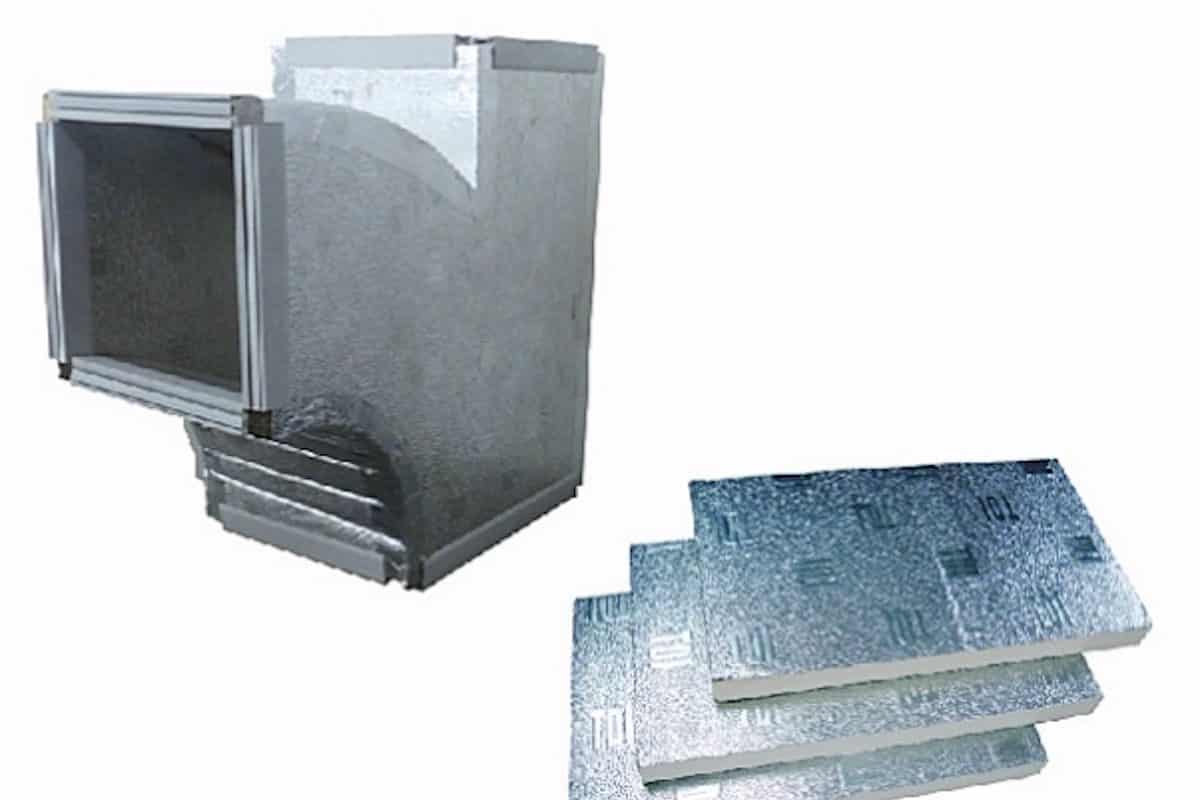
Pre-insulated ducts are not constructed using any sheet metals. Instead, they are entirely supported by the hardened PU or PIR insulations. Hence, many HVAC contractors found that the surface of pre-insulated ducts is easily damaged.
However, pre-insulated ducts promised many benefits. First of all, pre-insulated ducts are much lighter than traditional galvanized iron rigid ducts. I can use both of my hands to easily pick up half a meter long 600x600mm pre-insulated duct. Thus, the installation process is faster.
Next, pre-insulated ducts are easier to fabricate. Hence, the production time and delivery lead time are shorter thereby reducing the overall production cost. However, the material cost is still higher than sheet metals.
Perhaps, the greatest advantage of pre-insulated ducts is high efficiency. Pre-insulated ducts are joined by glues and clips, sort of like a slot-in. Such a jointing method has a much lower leakage rate than both slip & drive joint and TDC joint.
Furthermore, pre-insulated ducts are pre-insulated and hence, they do not require further insulations on-site which enable them to be installed very close to the soffit slab or even flush with the soffit slab. So, pre-insulated ducts occupy less space than rigid ducts.
Nevertheless, again, pre-insulated ducts are costly. Hence, not many HVAC contractors are willing to learn how to install them. Therefore, their adoption rate is still stagnated after so many years.
Lastly, consider my HVAC Begin (eBook) if you’re a beginner and you want to have a foundational knowledge in HVAC. But, if you have a year or two of experience, then I would suggest you consider my HVAC Basics (eBook). Nonetheless, I encourage you enroll in my HVAC Beginner Course: 10 Days to Become Competent in HVAC if you want to equipped yourself with a complete set of basic HVAC skills.
HVAC Beginner Course
Learn the most basics and foundational HVAC skills including cooling capacity calculation, equipment selection, duct sizing, pipe sizing, exhaust fan sizing, controls, electrical and more.
If you have anything to add (or ask) about this topic, leave a comment down below!


